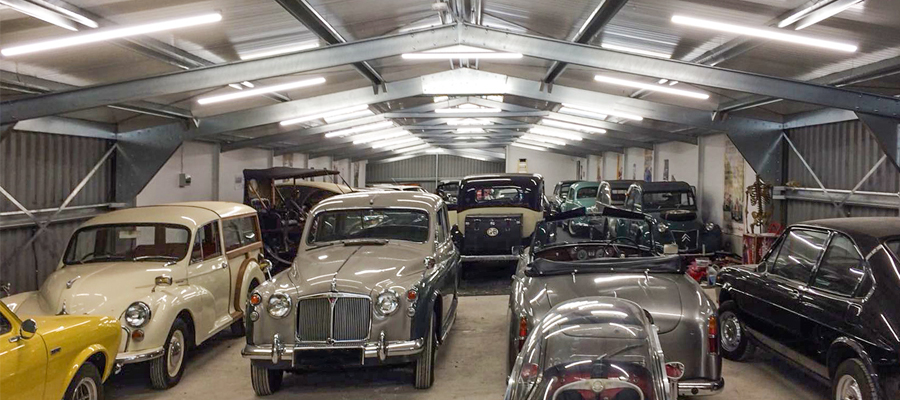
The Benefits of Prefabricated Steel Buildings with BM Steels
A prefabricated steel building, often referred to as a pre-engineered building (PEB), is designed by manufacturers using approved components and custom fabrications. Pre-engineered steel buildings are typically low-rise structures, mainly used for commercial purposes, with one or two floors. Known for their versatility, durability, and cost-efficiency, PEBs are transforming the construction landscape, offering a compelling solution for industrial facilities, commercial spaces, and more. At BM Steels, we’re specialists in designing and constructing custom-made steel buildings, providing our clients with high-quality, tailored solutions that meet their specific needs. Whether you’re looking to expand your business space or construct a new facility, we’ve got you covered.
Core Components of a Pre-engineered Steel Building
Before diving into the advantages of pre-engineered buildings, it’s essential to understand how they are constructed. Here are the core elements:
• Foundation: A solid foundation is critical for structural integrity. The choice depends on the building’s size, topography, and intended use, with options including pre-cast concrete walls and shipping containers.
• Framing: The framing is designed based on the building’s size and environmental conditions. Portal frame structures are commonly used for small to large industrial buildings.
• Insulation: Essential for temperature regulation, especially in varying climates, insulation protects against condensation and maintains stable indoor temperatures.
Request a Free Estimate for a Custom Steel Building
At BM Steels, we provide bespoke prefabricated steel buildings tailored to your exact specifications. Contact us today for a free, no-obligation estimate.
10 Key Benefits of Prefabricated Steel Buildings
- Safety
Steel is inherently fire-resistant and non-combustible, making it one of the safest building materials available. During high-temperature conditions, steel retains its strength, making it ideal for structures that require enhanced fire safety measures. For example, in tests, steel outperformed materials like aluminium and fibre-reinforced plastic (FRP), standing up to flames with minimal deflection. - Durability and Strength
Steel is celebrated for its durability and strength. Pre-engineered steel buildings are designed to withstand extreme weather conditions, including high winds, snow loads, and seismic events. This makes them a reliable choice for long-lasting, safe structures. - Cost Efficiency
One of the most significant advantages of pre-engineered steel buildings is their cost efficiency. Steel’s high strength-to-weight ratio reduces the amount of material required, leading to lower costs. Additionally, the prefabrication process streamlines construction, minimising labour and material waste, which results in substantial savings. Using advanced CAD/CAM technology, we ensure precision in design, reducing errors and speeding up the project timeline. - Quick Construction
Prefabricated components are designed to fit together seamlessly, allowing for quicker assembly. This reduces the need for highly specialised labour and shortens construction timelines—ideal for businesses needing to begin operations quickly or minimise disruptions to daily activities. - Design Flexibility
Pre-engineered steel buildings offer unparalleled design flexibility. Whether you need a factory, warehouse, office space, or distribution centre, steel allows for large, open-plan layouts without internal columns. This maximises usable space and provides the versatility to suit a wide range of applications. - Sustainability
Sustainability is a growing priority in modern construction, and pre-engineered steel buildings address this concern effectively. Steel is 100% recyclable, significantly reducing environmental impact. With the right insulation and energy-efficient designs, these buildings also help lower energy consumption and carbon emissions. - Low Maintenance
Pre-engineered steel buildings are incredibly low-maintenance. Steel’s natural resistance to pests, rot, and fire reduces the need for frequent repairs or replacements. Over time, this translates to lower operating costs and greater longevity compared to traditional buildings. - Planning Permission
Many prefabricated buildings fall under permitted development regulations, meaning they may not require formal planning permission. For detailed advice on planning permission for your custom prefabricated steel building, contact our experts at BM Steels. - Easy Expansion
Pre-engineered steel buildings are designed with future expansion in mind. Whether you need to expand before, during, or after the original construction, the process is quick and cost-effective. Adding to an existing structure typically involves removing an end wall, erecting new framework, and adding matching roof and wall panels. This simplicity makes it an ideal choice for businesses anticipating growth. - Energy Efficiency
With the right design, pre-engineered steel buildings can offer excellent energy efficiency. Combined with appropriate insulation, steel buildings can be designed to meet or exceed current energy standards, providing long-term savings on heating and cooling costs.
BM Steels Pre-engineered Buildings FAQ
- How long does it take to construct a pre-engineered steel building?
Construction times are significantly shorter than for traditional buildings. Depending on the building’s size and complexity, a pre-engineered steel structure can be assembled within days, reducing labour costs and keeping projects on track. - Are pre-engineered metal buildings environmentally friendly?
Yes! Steel is one of the most environmentally friendly materials available. It’s recyclable, and the construction process generates less waste. Additionally, with proper insulation, these buildings are energy-efficient, further reducing environmental impact. - How do pre-engineered steel buildings compare in cost to traditional buildings?
Pre-engineered steel buildings are generally more affordable than traditional buildings, thanks to shorter construction times, less labour, and lower material waste. They also offer long-term savings due to their durability and minimal maintenance requirements. - Do pre-engineered steel buildings meet UK building codes and standards?
Absolutely. Our steel buildings at BM Steels are designed to meet UK building regulations. We provide certified design, structural engineering, and manufacturing services, ensuring compliance and safety in every project.
Request Your Free Estimate Today
Ready to explore the possibilities of a custom-made pre-engineered steel building? Contact BM Steels today for a free estimate and let us help you bring your vision to life.
